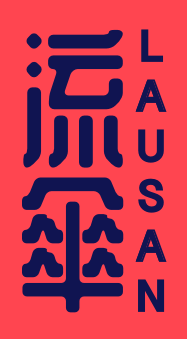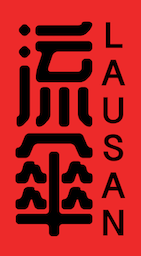Originally published in Spectre Journal. Republished with permission. Read this article in Chinese.
Twenty-first century China is capitalist. This represents a dramatic transformation for a country that had basically eliminated private ownership of the means of production by the end of the 1950s, while engaging in some of the twentieth century’s most radical political experiments during the following decade. Despite the profound reorganization of the relations of production over the past forty years, the Communist Party (CCP) retains its monopoly on power and is still avowedly socialist, albeit now with “Chinese characteristics.”
China’s communist road to capitalism has led to serious confusion for the left (both within China and globally) about how to characterize the current state of affairs. Clarifying this issue is critically important for anti-capitalist practice, and it is made all the more so by China’s increasing global power. Ultimately this is a question of whether we believe the Chinese state and its opposition to the US-led order embodies a liberatory politics. If, on the other hand, we understand China not as trying to transcend capitalism but as locked in competition with the US for control over the system, this leads to a very different political conclusion: we must chart our own course of radical liberation, independent of and opposed to all existing state powers.
Capitalism is a notoriously complex concept and I can only address certain core issues here. Fundamentally, it is a system in which human need is subsidiary to value production. This relationship is institutionalized via the universalization of market dependence as the commodity form comes to mediate human relations. This logic of capital manifests not only in the economic exploitation of labor and its attendant classed social relations, but also in modes of political domination within the workplace, the state, and beyond. Despite important differences from the liberal Anglo-American model, we will see that China has become capitalist on all counts.
Indicators of Chinese capitalism abound. The country’s metropolises are adorned with Ferraris and Gucci stores, foreign and domestic corporate logos are emblazoned across the skyline, and high-rise luxury housing has sprouted every major urban core. China’s rapid evolution from one of the most economically equal countries in the world to one of the most unequal is suggestive of major structural shifts. We might also see China’s membership in the WTO, the government’s continued insistence that it is in fact a market economy, or Xi Jinping defending globalization in Davos and advocating for the market to play a “decisive role” in resource allocation, as signs that the state is embracing capitalism. Similarly, one can find widespread cultural expressions that suggest an underlying capitalist orientation, including the valorization of hard work, a crass consumerism, and worship of the unique genius of corporate heroes from Steve Jobs to Jack Ma.
It would, however, be a mistake to confound such effects of capitalism with capitalism itself. In order to more fully come to terms with how capital has come to be the orienting principle of China’s state and economy, we’ll need to probe more deeply.
Economy, labor, social reproduction
In proposing a radical critique of capital, we could, as Marx might suggest, start from the commodity. A commodity is a thing that is useful to someone and contains an exchange value. Under a capitalist system of production, the exchange value dominates, which is to say that it is profit rather than usefulness that determines the production of things. Marx begins Capital with an analysis of the commodity form because he believed it would allow us to unlock the entirety of the capitalism system.
If we look at contemporary China, there is no question but that commodity production has been universalized. This is apparent in the vast transnational supply chains that are centered in China, where the exploitation of Chinese workers in factories producing everything from cell phones and cars to medical equipment, garments, and furniture has enriched corporations both domestic and foreign, while resulting in an export boom of unprecedented proportions. Chinese tech giants such as Tencent, Alibaba, Baidu, and ByteDance are distinct from Silicon Valley firms in some important ways, but they are united in their efforts to produce technology that it oriented, first and foremost, towards the commodification of information. Similarly, recurrent real estate bubbles and massively profitable development companies suggest that housing is being produced in response to market opportunities. Across a wide variety of sectors, it is clear that production is oriented first and foremost towards generating profit rather than responding to human need.
While an analysis of commodity production is illuminating, it is more politically potent to approach the issue from the other direction: rather than ask what capital demands in order to ensure its own continual expansion, we should ask how human beings survive. How then does the Chinese proletariat—a group of people whose only productive property is their own labor power—ensure its own social reproduction? The answer is, as with every other capitalist society, that proletarians must figure out some way to attach themselves to capital if they are to live. Basic needs such as food, housing, education, health care, transportation, and time for leisure and socializing are not guaranteed as a matter of course. Rather, the vast majority of people in China can only secure such items if they are first able to make themselves useful for capital.
It is perhaps obvious that the only reason hundreds of millions of people would make this choice is because they cannot survive in the impoverished rural areas from which they hail.
Chinese society is of course highly heterogeneous, striated with socio-economic division and corollary diversity in subsistence strategies. The most demographically and politically relevant category for elucidating the argument at hand is that of the migrant worker. Consisting of nearly three hundred million people living outside their place of official household registration (hukou), this is a gargantuan labor force and the backbone of China’s industrial transformation. Once a migrant worker leaves their place of hukou registration they forsake any right to state-subsidized reproduction, effectively rendering them a second class citizen within their own country. It is perhaps obvious that the only reason hundreds of millions of people would make this choice is because they cannot survive in the impoverished rural areas from which they hail, and they are compelled by market forces to seek work in the urban centers.
Capitalist labor relations were politically contentious when they first appeared in China in the late 1970s as many in the CCP still supported the Maoist “iron rice bowl” system of lifetime employment. But by the 1990s, that debate had been laid to rest, signaled most clearly by 1994’s Labor Law which established a legal framework for wage labor. Rather than ushering in a highly-regulated labor market in the social democratic mold (as was the wish of many reformers), labor has been commodified but remains highly informalized. Even after the implementation of 2008’s Labor Contract Law, which was specifically focused on increasing the prevalence of legal labor contracts, the number of migrant workers with contracts fell over the course of the early 2010s, with only 35.1 per cent having coverage as of 2016.
Workers without a contract do not enjoy legal protections, making it extremely difficult to address labor rights violations. Furthermore, social insurance—including health insurance, pensions, workplace injury insurance, unemployment, and “birth insurance”—is employer-based. Being relegated to labor informality produces other forms of exclusion and market dependence for people living outside their area of hukou registration. If, for instance, a non-local wants to enroll their child in an urban public school, the first requirement is to produce a local labor contract—this stipulation alone eliminates a large majority of migrants from public schooling. Although the mechanisms for distributing nominally public goods such as education vary widely by city, the general logic is to advantage those that the state has determined are useful in upgrading the local economy. Many large cities have “point-based” plans in which applicants must accumulate points based on a series of labor market-oriented metrics (e.g. highest level of education, skill certifications, “model worker” awards) in order to access public services. Everyone else is left to the whims of the market.
The situation for urban proletarians who work in the same place as their hukou registration is somewhat different, and certainly better from a material standpoint. They will be able to get access to public schooling, possibly some housing subsidies, and are much more likely to have a legally-binding labor contract. Welfare benefits in China are not generous, and social spending as a share of GDP is far below the OECD average, but urban residents have a better chance of accessing them. Deep class and regional inequities as well as fiscal problems plague the system. As a result, there is no question that even these relatively privileged groups must make themselves useful to capital in order to secure adequate health care, decent housing, or security in retirement. The dibao livelihood program is not sufficient, nor is it intended, to support reproduction at a socially acceptable level.
Political power
Not only is China’s economy capitalist, but the state now rules in the general interest of capital. As with every other capitalist country, the Chinese state has its own relative autonomy, and one may quibble about which state has more autonomy. But it is apparent enough that the state has hitched its wagon to the star of capitalist value, which has effected a profound shift in governance.
This capital-centric logic is abundantly apparent in shop floor politics. China has seen an explosion of worker insurgency over the past three decades, and the country is the global leader in wildcat strikes. How does the state respond when workers employ the time-honored tradition of withholding their labor from capital? While strikes inevitably each have their own unique character, the police intervene almost exclusively on behalf of the boss, a service they provide to private domestic, foreign, and state-owned enterprises alike. There are innumerable instances in which police or state-sponsored thugs have used coercion to break a strike. But one particularly prominent example was the violent police suppression of the strike of 40,000 workers at the Taiwanese-owned Yue Yuen shoe factory—the historical irony of riot cops intervening on behalf of Taiwanese capitalists was not lost on the workers. If the strike elegantly poses the question, “Which side are you on?” the Chinese state has made its choice apparent enough.
State violence has also been deployed in the policing of informal workers in urban public space. The much-hated “chengguan”—a para-police force formed in 1997 for the purpose of enforcing non-criminal regulations—has on countless occasions employed shockingly coercive methods to clear street hawkers and other informal workers from the street. Regularized police brutality has generated a deep and widespread animosity among the country’s informal workers, and anti-chengguan riots are widespread. In perhaps the most spectacular and violent example, migrant workers in Zengcheng, Guangdong took to the streets en masse in 2011 when a rumor spread that a pregnant woman had miscarried after being assaulted during a chengguan operation. After days of widespread rioting, the People’s Liberation Army violently put down the insurrection.
While strikes inevitably each have their own unique character, the police intervene almost exclusively on behalf of the boss, a service they provide to private domestic, foreign, and state-owned enterprises alike.
If we think of capital as not just an economic relationship based on exploitation, but a political relationship in which labor is subordinated, there are other important ways in which state action is consistent with the logic of capital. Just as the PRC was embarking on its capitalist transition, Deng Xiaoping in 1982 decided to remove the right to strike from the constitution. Paired with this restriction of labor rights has been a continual ban on worker self-organization. The only legal union is the All China Federation of Trade Unions, an organization that is explicitly subordinated to the CCP and implicitly subordinated to capital within the workplace. It is standard practice for enterprise HR managers to be appointed as the enterprise-level union chair without even a fig-leaf of democratic participation by workers. It goes without saying that workers do not see these unions as meaningfully representing their interests, and efforts to build autonomous organizations have been met with harsh repression.
The political subjugation of the proletariat extends to formal state structures as well. As with all citizens, workers have no capacity to self-organize in civil society, to form political parties, or to exercise any kind of political delegation, so they are entirely dependent on the goodwill of the CCP to represent them. The Party no longer claims to represent the interests of workers and peasants against their class enemies—since admitting capitalists to the Party and advancing the concept of “Three Represents” under Jiang Zemin, they have aimed to represent the “fundamental interests of the overwhelming majority of the people of China.” In combination with the state’s effective ban on acknowledging class antagonism, it is clear that the social basis of one-party rule has undergone a profound counter-revolution.
Even a cursory assessment of the social constitution of the central government reveals that capital not only has good access to state power, it is fundamentally inseparable from state power. The number of “frontline worker” representatives in the National People’s Congress (NPC) fell to just 2.89 per cent during the 2003-8 session, a dramatic decline from the 1970s. An astonishing concentration of plutocrats in the NPC and Chinese People’s Political Consultative Congress is most indicative of the formalization of capital’s political power: as of 2018, the wealthiest 153 members of these two central government bodies had an estimated combined wealth of US$650 billion. The legislature has sought to incorporate people who made their billions in the private sector, such as Pony Ma, head of internet giant Tencent. But the conversion between economic and political power works in the other direction as well: the family of Wen Jiabao (the former Premier) leveraged their political connections to build personal wealth estimated at US$2.7 billion. In the 21st century PRC, capital begets political power just as political power begets capital.
The ruling party’s claim that China is socialist is simply not borne out by reality. There are, however, a few features of the economy that are rather different from the modal capitalist country in 2020, and therefore deserving of somewhat more attention.
State involvement in the economy
There is no doubt that Chinese state intervention in the economy is more extensive than is the case in most capitalist countries. But if we are concerned with capitalism in general, rather than its relatively novel neoliberal form, China appears not all that exceptional. Chinese state-owned enterprises contribute 23-28 per cent of GDP—certainly high for today’s world. But dirigisme is nothing new for capitalism, appearing not only in its native France, but in a variety of fascist countries, post-independence India, and even KMT-controlled Taiwan, where state-owned enterprises contributed nearly one quarter of the country’s GDP as late as the 1980s. State intervention oriented toward enhancing efficiency, profitability, and predictability is not antithetical to capitalism, but a necessary component.
Returning once again to the perspective of workers, we will see that the difference between state and private capital is minimal. Tens of millions of state-sector workers were laid off in the 1990s and early 2000s as part of the state’s campaign to “smash the iron rice bowl.” Thrown into a labor market for which they were wholly unprepared, this privatization campaign engendered subsistence crises and massive resistance among the former masters of the nation.
Following this wave of retrenchment and theft of worker pensions and other public property, the remaining SOEs have been subjected to “hard budgets” and market forces, including in their labor regimes. As sociologist Joel Andreas has extensively documented, the admittedly imperfect experiments with workplace democracy in the Mao era have been eviscerated by marketization, and SOE workers are now equally subordinate to management as in an equivalent private firm. These firms are in no sense public property—they belong to and are controlled by an unaccountable state.
As comforting as it would be to trust that an emergent superpower will build the world we want, that is an illusion. We’ll have to build it for ourselves.
The question of land is related but distinct. Indeed, all urban land is owned by the state while all rural land is owned collectively by local residents. But as a huge volume of research has demonstrated, the separation of use rights from ownership rights has ushered in unmistakably capitalist uses of the earth’s surface. In cities this has meant a historically unprecedented boom in construction of commodity housing that, as already noted, is fully oriented to market signals. Urban governments are highly fiscally dependent on the profits from land auctions, leading to a tight alignment of their interests with those of developers.
Rural hukou holders are entitled to a plot of land, though as mass rural-to-urban migration would indicate, it is rarely enough or of sufficient quality to sustain social reproduction. Outward expansion of the city has resulted in mass dispossession of peasants. As with workers in SOEs, peasants have little ability to exercise supervision or control over their (nominally) collectively owned land, and the village leaders speak on behalf of the collective. The consequence has been endless cycles of land dispossession in which peasants generally receive a fraction of the market value of their land, while the cadres and developers cash in. Finally, for those people that do maintain rural land, agriculture in China has undergone a profound capitalist transformation, with land use rights being consolidated by agribusiness while various inputs are also commodified. That land is formally held collectively has done little to impede this process.
The logic of capitalist value production has insinuated itself into the economy and state, dramatically reformulating China’s social structure. But comprehending the class relations of contemporary China is only a first step. A fuller assessment of the complex co-constitution of class and other forms of social hierarchy based on race, gender, geography, and citizenship is necessary to formulate a political response adequate to the current moment of profound crisis. A whole series of pressing practical issues cannot be resolved based solely on class analysis, to say nothing of dominant liberal or ethno-nationalist frameworks: How should we interpret the Chinese state’s efforts to politically throttle social resistance in Hong Kong, its promises to annex Taiwan, and Han settler colonial projects in Xinjiang and Tibet? Is the huge growth in global investment under the Belt and Road Initiative an indication of emergent capitalist empire? What is a properly radical, anti-nationalist, and anti-imperialist response to intensifying US-China conflict?
These are some of the most urgent questions the left faces today, and there are no simple answers. But this much is certain: the Chinese state’s false promises to unilaterally guide the world into a socialist future must be fully rejected by anti-capitalists. Marx’s words from The German Ideology still ring true today: “Communism is for us not a state of affairs which is to be established, an ideal to which reality [will] have to adjust itself. We call communism the real movement which abolishes the present state of things.” As comforting as it would be to trust that an emergent superpower will build the world we want, that is an illusion. We’ll have to build it for ourselves.
Eli Friedman is an Associate Professor of International and Comparative Labor in Cornell’s School of Industrial and Labor Relations. He is the author of “Insurgency Trap: Labor Politics in Postsocialist China” (ILR Press, 2014) and the co-editor of “China on Strike: Narratives of Workers’ Resistance” (Haymarket, 2016).




